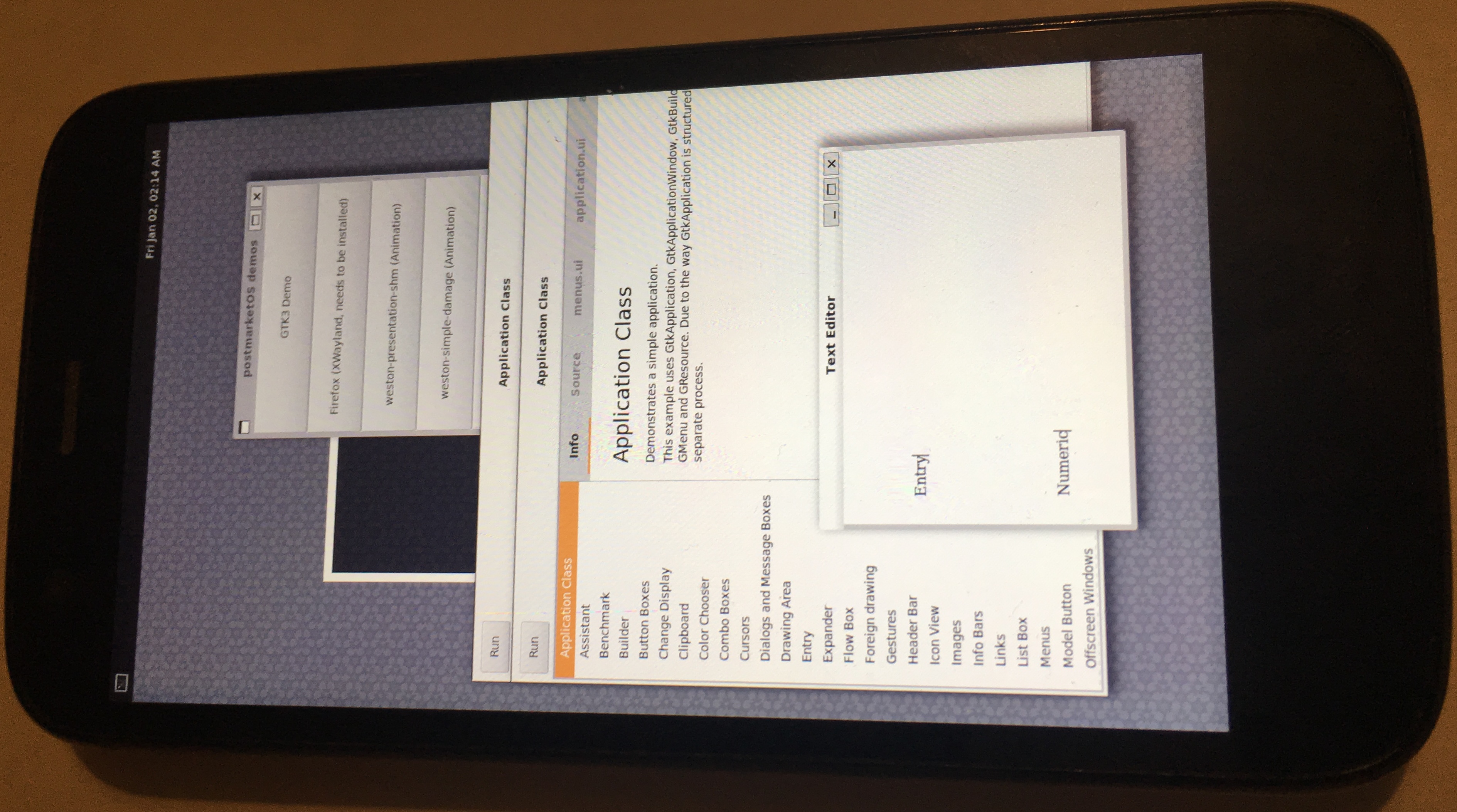postmarketOS
| PostmarketOS | |
|---|---|

| |
| Lizenz(en) | GNU GPL[1] |
| Erscheinungsdatum | Mai 2017 |
| Kernel | monolithisch (Linux) |
| Architektur(en) | ARM, ARM64, x86, x86-64 |
| Website | postmarketos.org |
postmarketOS (abgekürzt pmOS) ist ein freies und quelloffenes Betriebssystem für Geräte mit Touchscreen wie Smartphones. Es basiert auf die Linux-Distribution Alpine Linux und läuft auch auf mehreren herkömmlichen Smartphones bekannter Hersteller, auf denen dann proprietäre Treiber für die Nutzung einzelner Komponenten benötigt werden.[2]
Geschichte
postmarketOS wurde erstmals im Mai 2017 auf GitLab veröffentlicht.[3] Im Mai 2020 bootete postmarketOS bereits auf über 200 Smartphones und Tablets.[4] Das Unternehmen Pine64 lieferte Mitte 2020 die neueste Community Edition des PinePhones mit postmarketOS aus. Für die darin verwendete Hardware stehen jeweils freie Treiber zur Verfügung.[2]
postmarketOS 21.12 vom 29. Dezember 2021 basiert auf Alpine Linux 3.15 und unterstützt 23 Geräte von Smartphones über Tablets bis ARM-Notebooks: Arrow DragonBoard 410c, ASUS MeMo Pad 7, BQ Aquaris X5, Lenovo A6000 und A6010, Motorola Moto G4 Play, ODROID HC2, OnePlus 6 und 6T, PINE64 PineBook Pro, PinePhone, PineTab sowie RockPro64, Purism Librem 5, Samsung Galaxy A3 (2015) und A5 (2015) sowie S4 Mini Value Edition, Galaxy Tab A 8.0 und A 9.7, Wileyfox Swift, Xiaomi Mi Note 2, Pocophone F1 und Redmi 2.[5] Anfang Juni 2022 gelang es erstmals, postmarketOS mit Linux-Kernel 5.18 auf einem iPad Air 2 mit Apple A8X-SoC zu booten.[6]
Zum fünften Geburtstag von postmarketOS erschien am 12. Juni 2022 postmarketOS 22.06, basierend auf Alpine Linux 3.16. Ein Update-Skript vereinfacht ab dieser Version Updates von postmarketOS und erlaubt auch inoffiziell einen Wechsel zu einer früheren Version von postmarketOS. Mit dabei sind die Benutzeroberflächen Sxmo 1.9.0, Phosh 0.17.0, Gnome 42 und Plasma Mobile Gear 22.04. In der Version postmarketOS 22.06 werden 27 Geräte offiziell unterstützt.[7][8]
In postmarketOS 23.06 vom 7. Juni 2023 kam die Desktop-Umgebung Gnome Mobile hinzu. Gnome Mobile basiert auf Gnome 44. Zudem sind Phosh 0.27, KDE Plasma 5.27.5 und Sxmo 1.14.0 als Benutzeroberflächen verfügbar. Es werden von postmarketOS 23.06 31 Geräte offiziell unterstützt; das PineTab wird im Vergleich zur Vorgängerversion von der stabilen Version von postmarketOS nicht mehr unterstützt. Mit postmarketOS edge läuft das PineTab hingegen weiterhin.[9][10]
Fotos
-
Nokia N9 mit Desktop Xfce auf postmarketOS
-
Motorola Moto G mit Weston Compositor auf postmarketOS
-
Google/Asus Nexus 7 mit Weston Compositor auf postmarketOS
-
KDE Plasma Mobile auf postmarketOS
Weblinks
- https://postmarketos.org/
- https://wiki.postmarketos.org/ postmarketOS Wiki
- postmarketOS bei X/Twitter

- postmarketOS bei Wikimedia Commons

- PostmarketOS in der englischsprachigen Wikipedia

Quellen
- ↑ LICENSE · master · postmarketOS / postmarketos-images · GitLab
- ↑ 2,0 2,1 PinePhone Community Edition mit Mobil-Linux postmarketOS verfügbar | heise online, 18.07.2020
- ↑ postmarketOS // Aiming for a 10 year life-cycle for smartphones, May 26, 2017
- ↑ TuxPhones - postmarketOS now boots on over 200 phones and tablets, 6 May 2020
- ↑ Mobil-Linux postmarketOS v21.12 unterstützt mehr Geräte | heise online, 04.01.2022
- ↑ Linux soll alte iPads flottmachen | heise online, 28.06.2022
- ↑ Smartphone-Linux: PostmarketOS wird fünf und erhält Update-Funktion | heise online, 16.06.2022
- ↑ postmarketOS // v22.06 Release: The One Where We Started Using Release Titles, June 12, 2022
- ↑ Smartphone-Linux: postmarketOS 23.06 mit Gnome Mobile | heise online, 12.06.2023
- ↑ postmarketOS // v23.06: From the GNOME Mobile 2023 Hackfest, June 07, 2023




